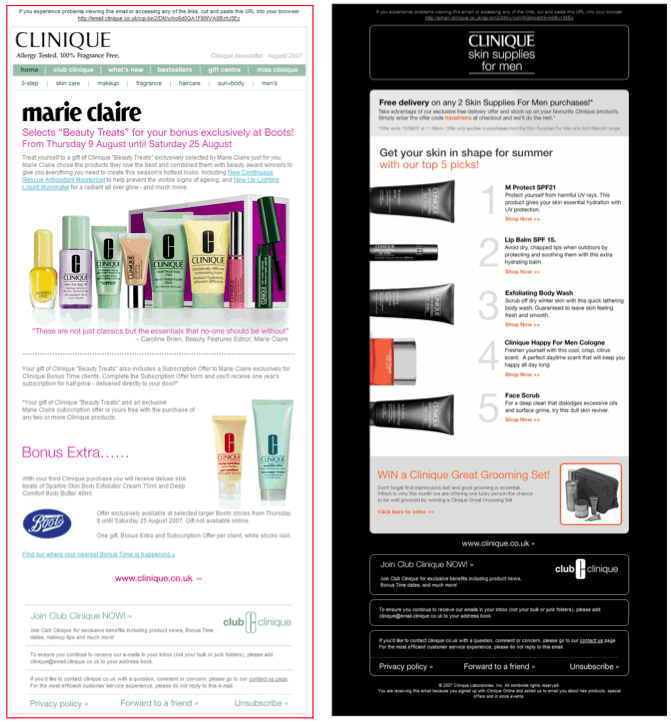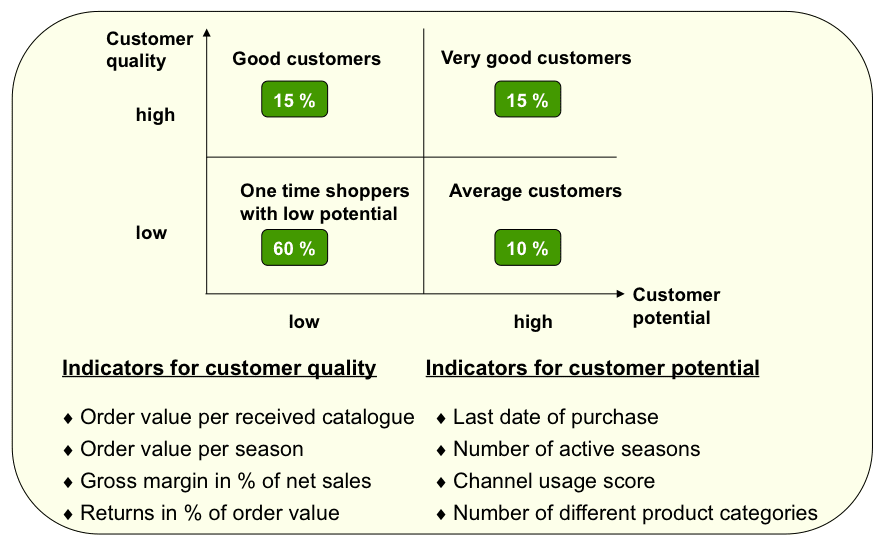Learning from 6 layered targeting options used by online retailers that can be applied to any business
There are many different levels in sophistication of targeting for email marketing. In this post I'll run through some of the most common examples used by retailers since I think they can often be applied to companies who don't sell online like relationship-building or B2B companies.
Here, I will outline what I see as the 6 most common segmentation approaches. More details are available in my book Total Email Marketing and my more recent 7 Steps to Email Marketing Success Ebook on Smart Insights.
Download Expert Member resource – Advanced Lifecycle Email Marketing Guide
A best practices briefing for high email volume businesses to take their email marketing to the next level. This guide is aimed at managers responsible for growing online revenue by integrating different communications channels in larger organisations or businesses that are already fairly sophisticated in their email marketing.
Access the Advanced lifecycle email marketing guide
Although this post gives email marketing examples, the segmentation approaches here can be used to other forms of online targeting through digital marketing, particularly website personalisation or display ad network remarketing.
Often the different targeting options can be combined through layering the segmentation as shown in this approach used by eBay UK shared at a recent email marketing conference:

To implement this level of email marketing needs a capable email marketing system that supports event-triggered marketing and dynamic content insertion where rules are used to drop different offers and email messages into a container as described last week's post on how to manage event-triggered or automated email marketing.
These are the six targeting options.
- 1. Customer profile characteristics (demographics).
- 2. Customer value - current and future.
- 3. Customer lifecycle groups.
- 4. Customer behaviour in response and purchase (observed and predicted).
- 5. Customer multi-channel behaviour (channel preference).
- 6. Customer personas including psychographics
Targeting option 1. Customer profile characteristics (demographics)
This is where most will start, based on their traditional segmentation based on the type of customer recorded in the fields of the customer profile.
For B2C e-retailers this will include age, sex and geography. For B2B companies, this will include size of company and the industry sector or application they operate in. Here's an example:

Many B2B companies target according to industry sector, but do not also look at job role.
Targeting option 2. Current and predicted value
Retailers work hard to understand their most valuable customers so that they can develop loyalty in this group. A useful way of thinking about customer value is these three groups, originally identified by Peppers and Rogers of 1 Most-valuable customers (MVCs), Most-growable customers (MGCs) and Below Zero Customers (BZCs). When considering loyalty-based segmentation, it's useful to compare current against future value, and it's best to visualise this within a matrix.
Here is one way you can analyse value using a real example from retailer group Otto presented by Chris Poad their Ecommerce Director at an Econsultancy Masterclass. It's actually more sophisticated than simple value in that it looks at a range of indicators of quality.

Here's a creative example for a VIP Mailing sent to highest value segment. ESP eCircle shared that the average performance was 5 times higher than the regular newsletter:

Option 3. Targeting by customer lifecycle groups
As visitors use online services they can potentially pass through several stages, often known as the online loyalty ladder. For many e-retailers, encouraging customers to move from the first purchase to the second purchase and then onto the third purchase is a key challenge. Specific promotions can be used to encourage further purchases. Similarly, once customers become inactive, i.e. they have not purchased for a defined period such as 3 months, they become inactive and further follow-ups are required. Here's an example of the lifecycle segmentation approach used by e-retailer Tesco.com which they call a "commitment-based segmentation" based on recency of purchase, frequency of purchase and value. It's used to identify 6 lifecycle categories which are then further divided to target communications:
- Logged-on
- Cautionary
- Developing
- Established
- Dedicated
- Logged-off (the aim here is to winback)
This is an example of what I think is an excellent branded welcome email from Clinique:

Targeting option 4. Current and predicted behaviour in response and purchase
As customers progress through the lifecycle, if all interactions with different communications such as email clicks and pages visited on site are captured, we'll be able to build up a detailed response and purchase history.
Developing an activity score to show levels of customer activity or how "hot" they are to respond is one approach.
A more sophisticated method of understanding behaviour is to categorise customers according to the details of their recency, frequency, monetary value and category of products purchased (RFM analysis). The RFM technique is quite involved, so we will cover that in more detail in a moment.
Using these RFM techniques in combination with the other targeting techniques it becomes possible to use predictive modelling to identify the "Next Best Product" for particular customer types. With the right system of tracking and web analytics, it should be possible to see not only which types of links in an e-mail a customer has clicked upon, but also which types of web pages they have visited recently. For example, a Select on the database for a wine promotion could be used to target customers who have been to the wine section of the website in the last 3 months, but have not purchased wine.
Targeting option 5. Multi-channel behaviour (channel preference) = Right Touching
No matter how enthusiastic you are about online channels, some customers will prefer using online communications channels and many others will prefer traditional channels. I call this Right Touching - this is the holy grail of digital marketing - delivering the perfect message for each customer. Just one aspect of this is determining which customers prefer email and then up-weighting email activity more for them, while reducing frequency and using more traditional communications for those who prefer these. These days we will also need to consider social media response.
So it's useful to have a flag within the database which indicates customers' channel preference and by implications, the best channel to target them by.
Channel preference will be indicated by RFM and response analysis since customers with a preference for online channels will be more responsive and will make more purchases online. Customers can also be asked direct through surveys.
Customers that prefer online channels can be targeted mainly by online communications such as e-mail, while customers who prefer traditional channels can be targeted by traditional communications such as direct mail or phone.
To deliver relevance also requires a plan specifying the number, frequency and type of online and offline communications and offers. This is a contact or touch strategy which is described in a later section.
Targeting option 6. Customer personas including psychographics
Once we have reviewed and selected from the five targeting approaches above, it a final step to review using marketing personas for typical customer types.
These have the benefit that the characterise segment types in the context of the targeting options mentioned above such as stage in lifecycle, demographics and style preferences.
The design persona concept can also potentially be used for e-newsletters, but isn't used so often.
I'd like to hear about how personas can be used for email marketing, or your thoughts on any of the other targeting options listed here.












